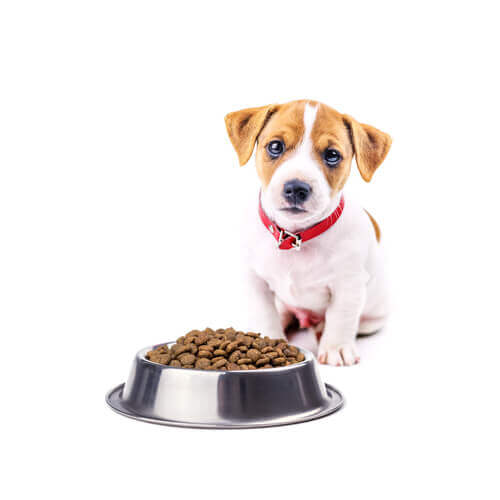Tips for Changing Your Dog's Diet Properly

There are several stages in a dog’s life and therefore their diet must change accordingly to suit them. However, sometimes these changes can be difficult for both them and us. That’s why in this article we’re going to give you some tips on how to change your dog’s diet. Stay tuned!
A dog’s diet
Lunchtime is probably one of the most awaited moments of the day for a dog. From an evolutionary point of view, dogs have been adapting to not have too many changes in their diets. The main reason for this lies in their gut flora, a series of beneficial microorganisms that reside in the digestive system and help in the processes related to nutrition.
A dog’s gut flora is less adapted to changes if we compare it to a human’s, for example. Does this mean that a dog should always eat the same thing? Yes and no. Changing a dog’s diet is something that must be done, but in a certain way and with certain timing.
A dog’s nutritional requirements differ throughout its life. Thus, it’s important to know when and what type of food to give your pet. Consulting a vet is always the best option to make this a successful mission!

Changing their diet according to their age
Similarly to humans, a dog’s diet varies as they grow. Puppies start out on mother’s milk or special veterinary formulas. However, as they reach the first few weeks of age, the puppy starts to eat solid food.
After the first few months, a young dog will need a different nutritional intake: an increasingly lower energy requirement, but where both protein and carbohydrates are present. As they grow, this “maintenance” diet will be transformed into a diet especially indicated for older dogs. In this kind of diet, the food’s fiber and antioxidant content will be higher.
To ensure that these changes are made correctly, it’s best to have the help of a veterinarian or animal nutrition expert. Surely one of the first things he or she will recommend is that all changes should be done gradually, little by little. By doing so, the impact on both the dog and its gut flora will be less, as the new food is added progressively.

Tips for a diet change
As we’ve said, one of the tricks that must be taken into account is the timing with which changes must be made. A demanding dog will notice the change in its diet less if we do it little by little. As a result, your pet’s food bowl will hold more of the new food over the course of a week.
In order to see the difference the new food can make in your dog, we recommend allowing 7 – 10 days to ease the transition from their current food. Simply feed a little less of the previous food every day and a little more of the new food until you’re feeding the new food exclusively. This gradual transition will help avoid unnecessary stomach issues or dietary problems.
A very common trick, and one that usually works, is to mix the two types of food (or the food we are including) in the container. This way, if your pet is quite fussy, then it’ll be more difficult for it to differentiate between the two.
Another useful tip is to avoid leaving the food bowl out all day. This can also help your dog get used to the new type of diet. Thus, if the dog is used to eating at a certain time of day, the change will be less uphill.
In any case, always follow your vet’s advice to make the best possible change. We wish you good luck!
All cited sources were thoroughly reviewed by our team to ensure their quality, reliability, currency, and validity. The bibliography of this article was considered reliable and of academic or scientific accuracy.
Suchodolski, J. S. (2011). Intestinal microbiota of dogs and cats: a bigger world than we thought. Veterinary Clinics: Small Animal Practice, 41(2), 261-272.
